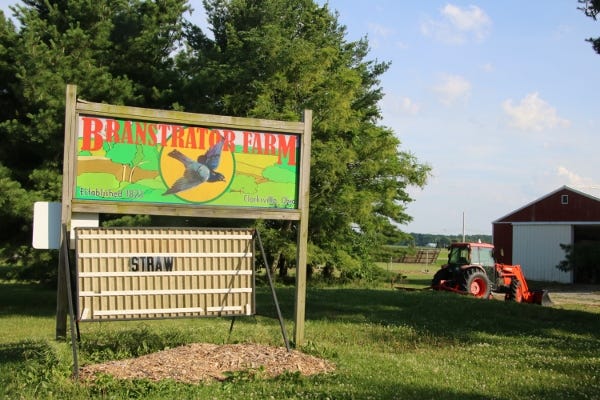VIDEO: Rusty and I visited this Ohio 200-year old pumpkin farm; now, this amazing drone video shows it's kind of a big deal
Click here if the embedded video doesn't work for you.Some days as a journalist, you find yourself bouncing around in a pickup truck with your dog, riding through 20 acres of pumpkins learning about cover crops on a farm that can trace its origins to the American Revolution. Those are the good days.
Among the great privileges of being a journalist is the chance to meet fascinating people. Many have little to do with the story you are pursuing -- it just happens magically. Some will even invite you into their lives, their homes, and their families. It is the best part of my job, and not a day goes by when I'm not thankful for it.

During my summer road trip this year, I spent some time in one of my favorite underdog small cities, Wilmington, Ohio. You probably know something of the town's story -- it became the poster child for the economic collapse in 2008 when the local DHL facility closed, leaving a stunning percent of the residents unemployed. Wilmington turns out to be the little town that could, and it's clawing its way back. It check in on it periodically.
On this year's trip, Jon Branstrator offered Rusty and I a night at Branstrator Farm. He assembled some friends from town, made dinner from ingredients he'd grown, and gave us a tour of his crops. It was delicious in every way.
Branstrator Farm was founded in 1823, when Andrew Branstrator purchased 400 acres of land from Stephen Mason, who had been granted 1,000 acres from the Virginia Military District for service during the Revolutionary War. Five generations later, Jon Branstrator returned home from Costa Rica determined to use farming techniques that would avoid the land degradation he'd witnessed in Latin America. Jon spent a good hour explaining to me the virtue of planting cover crops -- wheat that grows and covers the ground, providing a kind of cozy biological blanket boil for the soil and crop seeds. It cuts way down on the need for pesticides.
That's just one example of the "regenerative" farming practices Jon employs that caught the attention of the folks at Dorothy Lane Market, who produced the video you can watch above.
"Non-GMO, regenerative farming practices ... everything is fine and dandy at the Branstrator Farm pumpkin patch," Dorothy Lane says. If you love drone photography, you should really watch
Branstrator farm is heavy on pumpkins and winter squash -- there's 25 acres -- which makes this time of year pretty important. But he also has eight acres of strawberries, four acres asparagus, four of peach trees, twenty five of pumpkins and winter squash, four of staked tomatoes, and some blackberries, raspberries and currants, along with multiple acres of soy beans, rye, and soft red winter wheat.
When he showed me around, he joked about having an imPEACHment party when his fruit trees are ripe.
Several family members are buried on the farm, as you can see from my pictures. His love ofthe land, and Wilmington, is enough to make anyone pause and think about community in their own lives. That's why you shouldn't leave this page without clicking on the video above. Then, perhaps, you should go out and plant something.

AlertMe If you've read this far, perhaps you'd like to support what I do. That's easy. Buy something from my NEW LIBRARY AND E-COMMERCE PAGE, click on an advertisement, or just share the story.


